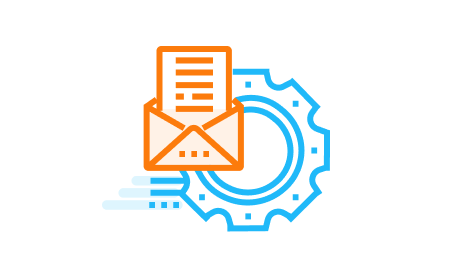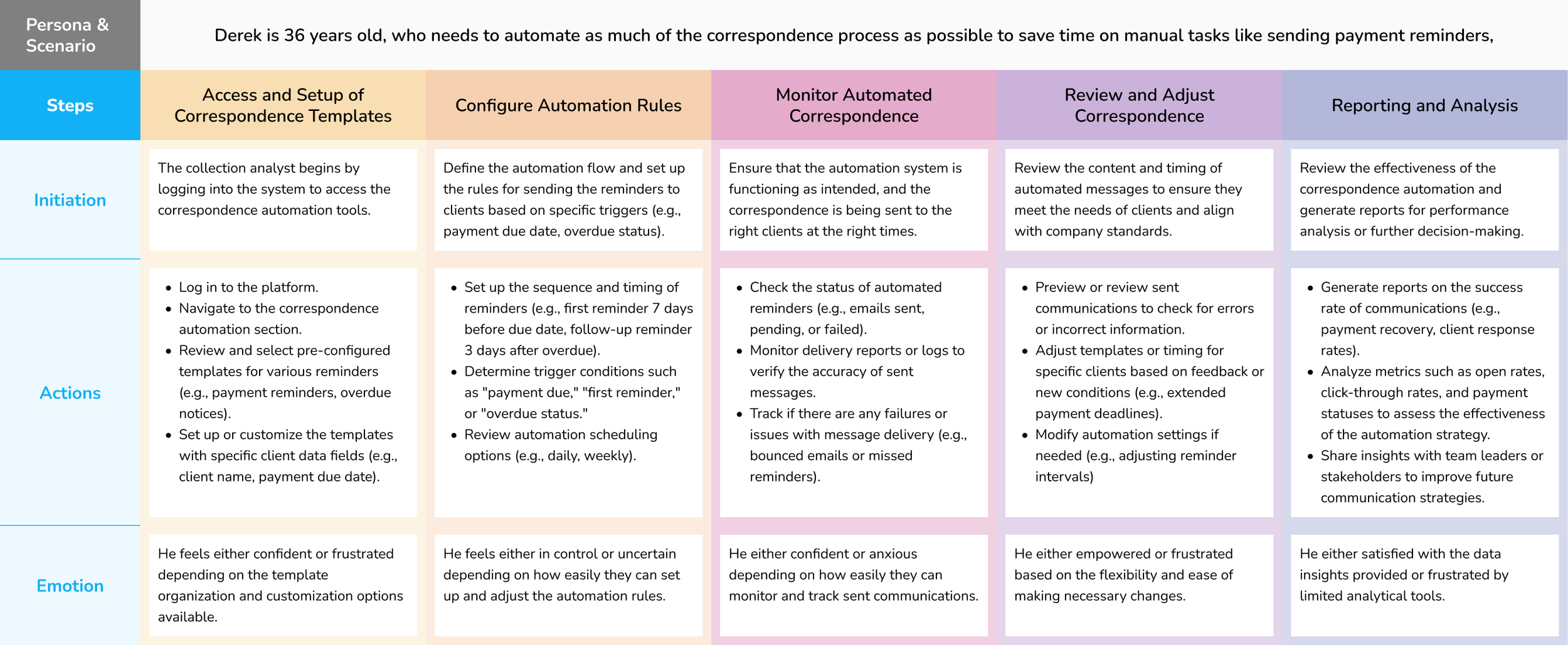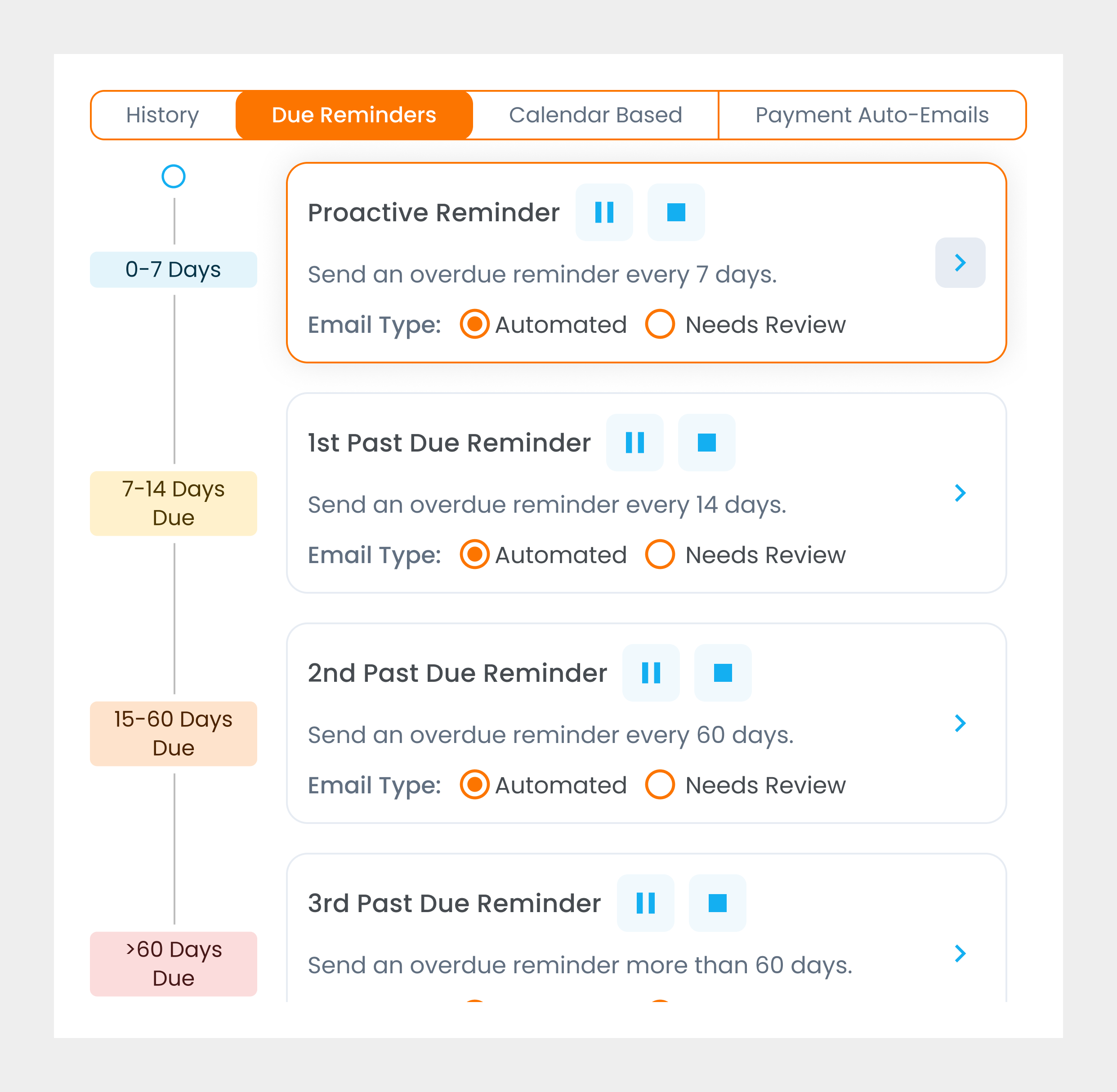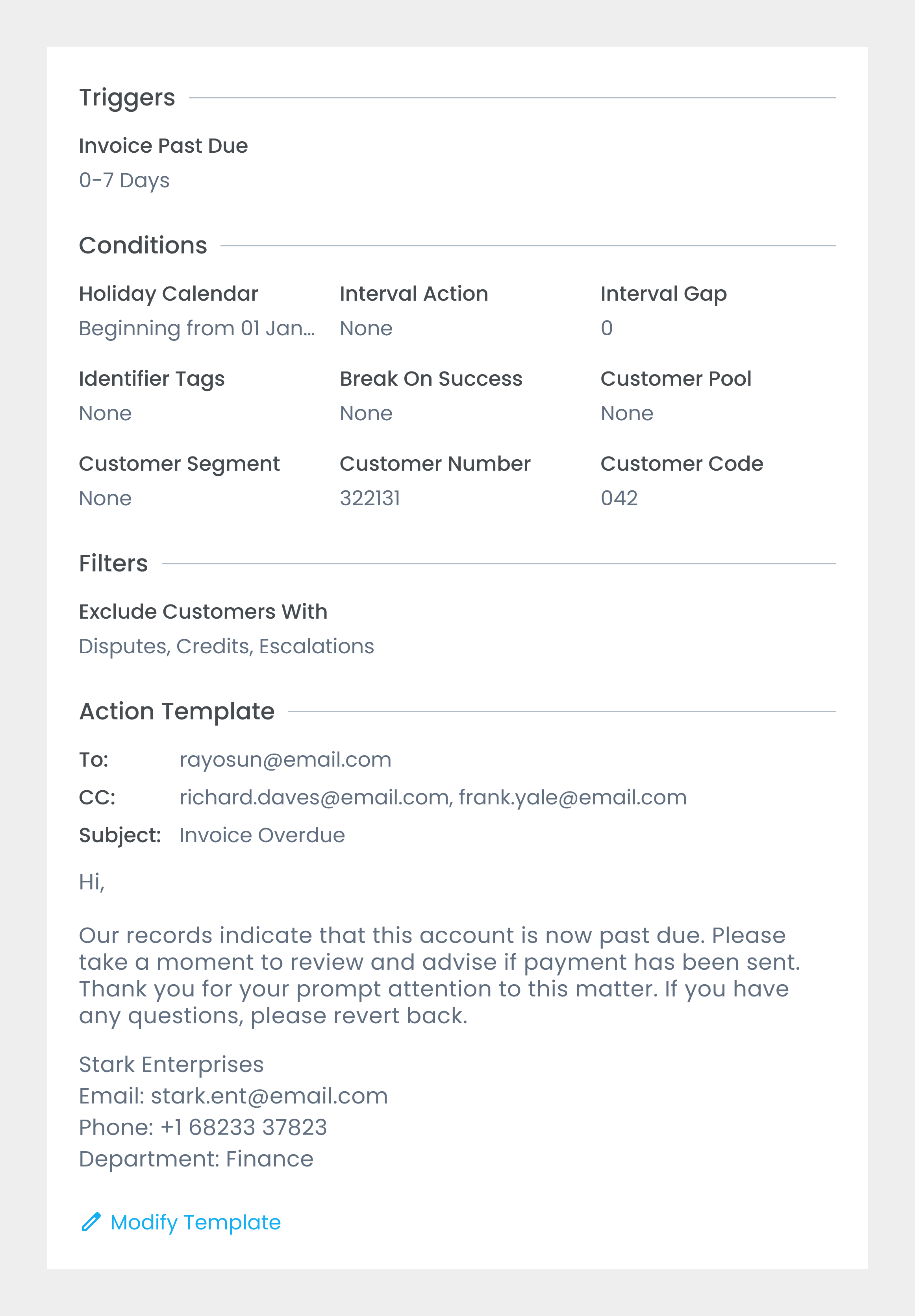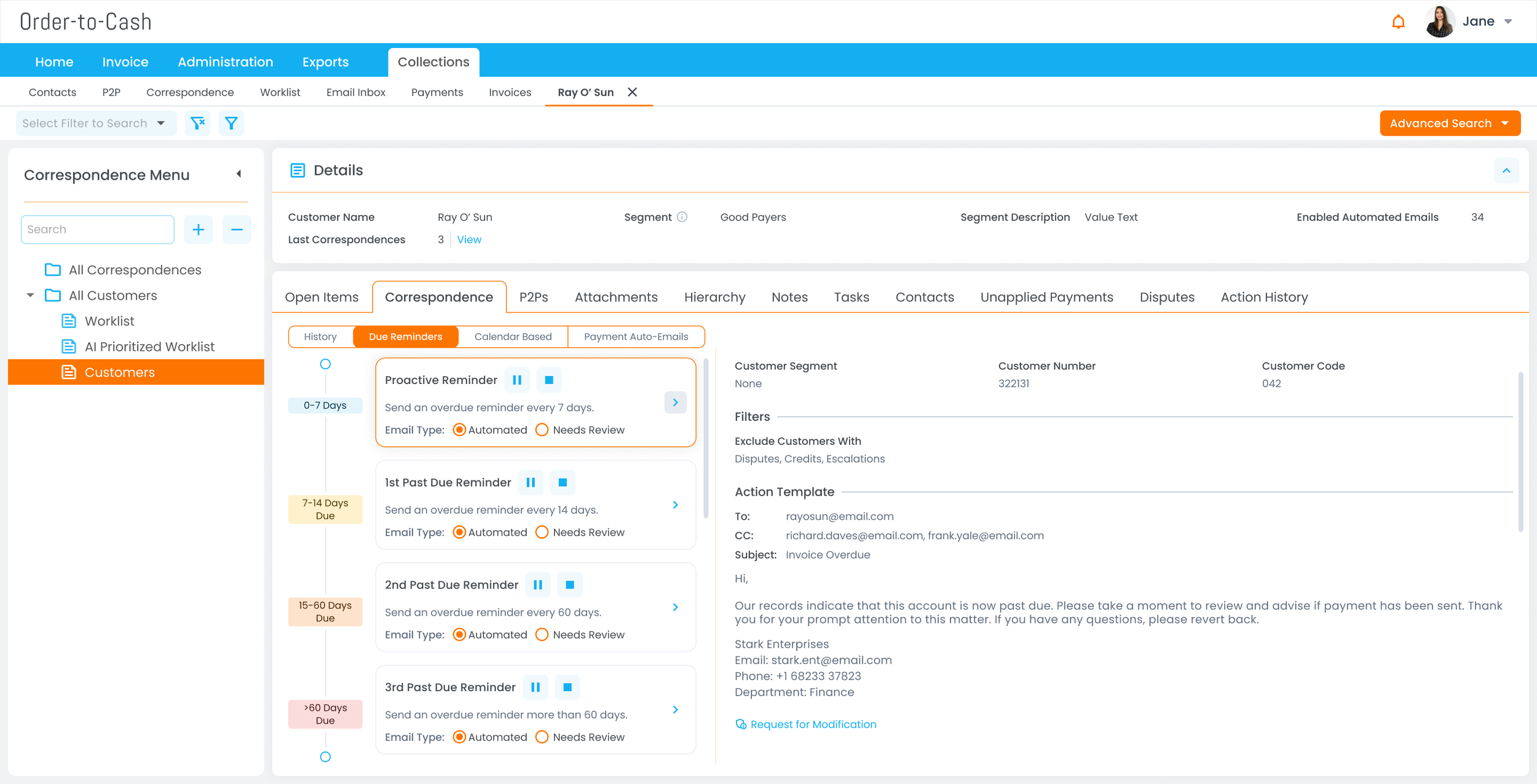Correspondence Automation
The Product
Correspondence automation refers to the use of automated systems to send emails to recipients based on predefined templates and rules. These systems are often used in customer relationship management (CRM), marketing automation, and business operations to streamline communication and reduce manual effort. Customers utilize this feature to manage communications with their clients in a Business-to-Business (B2B) context.
Problem Statement
For a particular customer, the system lacked a structured sequence for sending correspondence templates, making it difficult for collections analysts to manage outreach consistently.
This ambiguity led to missed follow-ups, duplicated communication, and limited visibility into the history of interactions. Without a clear centralized view, analysts were forced to manually track emails across different systems, introducing errors, slowing down workflows, and reducing customer confidence.
Team & Role
Role: UX Designer (solo) - led the full design process from discovery to final UI, including research, wireframes, high-fidelity designs, and stakeholder collaboration.
Team: Product Manager (Collections AR), UI Architect, Developers.
Duration: 2 months (July 2024 to September 2024)
Process and Challenges
1. User Persona: Financial Analyst
The email correspondence automation feature is a crucial tool, enabling financial analysts to handle high volumes of communication efficiently, accurately, and consistently.
Their main goal is to improve efficiency by automating routine tasks, minimizing human error in routine correspondence, enhancing reporting, and maintaining clear, accurate, and audit-friendly documentation.
By reducing manual work and errors, they can focus on more strategic, analytical tasks that drive business value while maintaining high standards of client service and compliance.
“I never know what template has been sent or what will go out next. I end up using spreadsheets just to keep track.”
2. User Research Insights
After detailed discussions with stakeholders and product managers, I identified the following key pain points:
Manual tracking led to inconsistencies in follow-ups and customer communication.
Sequencing: Users are unable to easily identify the sequence in which reminders or other messages will be sent to clients. The absence of this feature could result in missed opportunities, delays, or redundant communications, leading to potential client dissatisfaction.
Template Details: Users are unable to view detailed records of the sent correspondence. They cannot track the status of individual communications or review the content that has been sent to clients.
3. Building User Journey
For the Collection Analyst, it is essential to ensure that the communications occur in a timely manner.
I collaborated with PMs to map current communication pain points, then crafted the user journey that outlines how to effectively manage automated emails.
4. How Might We + Competitive Audit
Following a comprehensive competitive audit, two key issues were identified:
Lack of Clear Menu Structure: The current systems lacked an intuitive menu structure that allowed analysts to easily navigate and view the sequence of automated emails. In many instances, analysts were unaware that this feature even existed within the system.
Limited Visibility and Customization: While viewing the email sequence, other products failed to provide sufficient details or the ability to modify templates, offering no flexibility for analysts to tailor communications to their specific needs.
Now that I had a clear understanding of the problems our customers were facing, the next question became:
“How might we create a more intuitive and transparent correspondence automation system that allows collection analysts to easily manage the sequence, track the status, and customize reminders, ultimately reducing confusion and improving efficiency?"
Key Features
Image: Pause/Stop gives control without disrupting flow.Customer Listing Screen: The user can access a comprehensive list of customers, where they can search and filter through the data. By clicking on a specific customer, they are presented with detailed insights.
Customer Details: This section provides a complete overview of the customer, including key data such as customer number, unique code, transaction history.
Timeline: To provide clear visibility into the communication process, I integrated a timeline component, enabling users to visually track the sequence of automated emails.
Secondary Actions – Pause, Stop: Two secondary actions are made available to the user: Pause and Stop. These options allow the user to either pause the automation (temporary) or completely stop it (permanent).
Timeline Card: By clicking on each timeline card, the user is presented with a detailed view on the right side, offering more in-depth information about the specific communication step.
Correspondence Details: Each automated email is triggered by an event, such as an invoice past due. Based on the time elapsed since the due date, the payment is categorized into a corresponding bucket. To ensure the email is triggered accurately, a series of conditions must be configured.
Filters: To provide even greater flexibility, an additional filter option is available. This feature enables users to customize the automation process further.
Template Preview: The user has the ability to preview the email template. If any discrepancies or errors are found, they can easily modify the content to ensure accuracy.
Overall Details Screen
Takeaways
Impact
By introducing a timeline-based interface with customizable reminder controls, the system eliminated ambiguity and helped collection analysts easily manage email sequences, boosting operational clarity, slashing manual tracking errors, and improving task efficiency.
Following launch, the feature became one of the most widely adopted tools in the suite, significantly reducing manual workload for customers. The automated email workflow led to a 52% increase in financial analysts’ efficiency by eliminating repetitive tasks and streamlining their daily operations.
What I Learnt
I learned to approach core problems by treating them as objects like visual elements, components, or features that encapsulate specific behaviors, interactions, and properties.
This approach enabled me to effectively utilize the design system, leveraging existing components to reduce development time and enhance overall efficiency.
